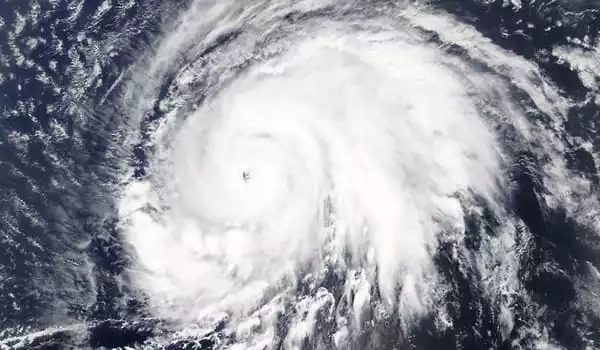When predicting how storms will alter in the future, it is useful to know something about their history. Hurricanes in the North Atlantic have been increasingly common in the previous 150 years, according to historical records dating back to the 1850s.
Climate modeling, rather than storm records, is now being used by scientists to reconstruct the history of hurricanes and tropical storms around the world. The analysis concludes that the frequency of North Atlantic storms has grown during the last 150 years, as historical records have demonstrated.
However, scientists have questioned whether this increased tendency reflects reality or is simply a result of unbalanced record-keeping. Would 19th-century storm trackers have recorded more storms if they had access to 21st-century technology? Because of this inherent uncertainty, scientists have avoided relying on storm records and the patterns within them for insights about how climate effects storms.
Climate modeling, rather than storm records, was utilized in a new MIT study published in Nature Communications to reconstruct the history of hurricanes and tropical cyclones around the world. The analysis concludes that the frequency of North Atlantic storms has grown during the last 150 years, as historical records have demonstrated.
Major hurricanes, in particular, and hurricanes in general, are more often today than in the past. Those that do make ashore have gotten more powerful, with more catastrophic potential. Surprisingly, while storm activity in the North Atlantic has increased overall, the same trend has not been observed in the rest of the world. The study discovered that the global frequency of tropical cyclones has not altered appreciably over the last 150 years.
Nobody disagrees that that’s what the historical record shows. On the other hand, most sensible people don’t really trust the historical record that far back in time. We adopted this technique to avoid any artificial trends caused by the insertion of increasingly varied observations.
Kerry Emanuel
“The evidence does point, as the original historical record did, to long-term increases in North Atlantic hurricane activity, but no significant changes in global hurricane activity,” says study author Kerry Emanuel, the Cecil and Ida Green Professor of Atmospheric Science in MIT’s Department of Earth, Atmospheric, and Planetary Sciences. “It will very probably affect the interpretation of climate’s influence on storms — that it’s actually the regionality of the climate, and that something occurred to the North Atlantic that was distinct from the rest of the world. It could have been triggered by global warming, which is not always consistent across the globe.”
Chance encounters
The International Best Track Archive for Climate Stewardship is a database that has the most comprehensive record of tropical cyclones (IBTrACS). This historical record includes observations taken by satellites and aircraft as recently as the 1940s. The oldest records in the database are based on reports from ships and islands that happened to be in the path of a storm. These previous records extend back to 1851, and the database overall reveals a rise in North Atlantic storm activity over the last 150 years.
“Nobody disagrees that that’s what the historical record shows,” Emanuel says. “On the other hand, most sensible people don’t really trust the historical record that far back in time.”
Scientists recently utilized a statistical method to identify storms that the historical record may have missed. They did this by consulting all digitally reconstructed shipping routes in the Atlantic during the last 150 years and mapping these routes onto modern-day hurricane paths. They then calculated the likelihood that a ship would encounter or completely miss the presence of a hurricane. According to this approach, a considerable number of early storms were most likely missing in the historical record. After accounting for these missed storms, scientists concluded that storm activity had not altered during the previous 150 years.
However, Emanuel points out that storm routes in the nineteenth century may have resembled today’s tracks. Furthermore, because older routes have not yet been digitized, the scientists may have missed important cargo routes in their investigation.
“All we know is that if there been a difference (in storm activity), it would have been undetectable using digital ship records,” Emanuel explains. “So I reasoned that there might be a chance to do better by not using any past data at all.”

Seeding storms
Instead, he approximated past hurricane activity using dynamical downscaling, a technique developed and used by his lab over the last 15 years to explore the effect of climate on hurricanes. The method begins with a large global climate simulation and embeds a finer-resolution model that simulates characteristics as small as hurricanes within it. Real-world measurements of atmospheric and ocean conditions are then incorporated into the integrated models. Emanuel then spreads hurricane “seeds” around the realistic simulation and runs the simulation forward in time to see which seeds grow into full-fledged storms.
Emanuel inserted a hurricane model into a climate “reanalysis” for the new study, which is a form of climate model that integrates historical observations with climate simulations to build accurate reconstructions of previous weather patterns and climatic conditions. He employed a subset of climate reanalyses that solely account for observations obtained from the surface, such as from ships, which have regularly recorded weather conditions and sea surface temperatures since the 1850s, as opposed to satellites, which began systematic monitoring only in the 1970s.
“We adopted this technique to avoid any artificial trends caused by the insertion of increasingly varied observations,” Emanuel says. He used an embedded hurricane model on three separate climate reanalyses to simulate tropical cyclones around the world over the last 150 years. He reported “unequivocal increases” in North Atlantic storm activity across all three models. “I didn’t anticipate to observe such a big increase in activity in the Atlantic since the mid-nineteenth century,” Emanuel explains.
Within this overall increase in storm activity, he also saw a “hurricane drought” – a time in the 1970s and 1980s when the number of yearly hurricanes temporarily decreased. This pause in storm activity can also be seen in historical records, and Emanuel’s group proposes a reason: sulfate aerosols, which are byproducts of fossil fuel combustion, likely set off a chain reaction of climate effects that cooled the North Atlantic and temporarily suppressed hurricane formation.
“Over the last 150 years, the general trend has been growing storm activity, which has been stopped by current hurricane drought,” Emanuel observes. “And, at this point, we’re more certain about why there was a hurricane drought than we are about why there is a long-term increase in activity that began in the nineteenth century. That remains a mystery, and it has implications for how future Atlantic hurricanes may be affected by global warming.”
















